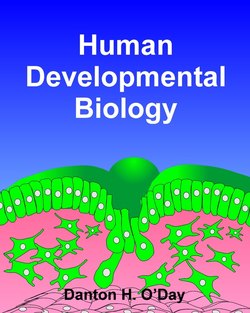Читать книгу Human Developmental Biology - Danton Inc. O'Day - Страница 23
The Intrinsic Pathway: Cell Death Starts Inside
ОглавлениеAs discussed above, apoptosis can be initiated by internal events (i.e., "intrinsic pathway") involving the disruption of mitochondria and the specific enzyme cytochrome C, in turn leading to the downstream activation of caspases. Before we continue, let’s quickly review mitochondrial structure and function. Mitochondria are called the “powerhouses of the cell” because they are the site where most of the ATP is generated via aerobic metabolism. The following figure (3.9) shows that an outer membrane surrounds each mitochondrion. The inner membrane is folded into the matrix as cristae. F1 particles, which are ATPase enzymes, are localized on the cristae and oriented into the matrix.
Figure 3.9. The structure of a mitochondrion.
This design is very effective because it organizes the metabolic functions of the mitochondria as shown in the following figure (Figure 3.10). Thus glycolysis (anaerobic metabolism) generates ATP in the cytoplasm as well as providing the substrate molecules for aerobic metabolism, leading to ATP production within the mitochondria. This occurs via tightly linked events: the Krebs cycle in the matrix
and the electron transport chain in the cristae, coupled with ATP synthesis via F1 ATPases bound to the cristae.
Figure 3.10. Compartmentalization within a mitochondrion.
Most readers will have learned the details behind mitochondrial structure and function in high school and introductory biology books. But what is important here is the presence of cytochrome C in the electron transport chain and its role in apoptosis (Figure 3.11).
Figure 3.11. Apoptosis initiated by mitochondrial damage.
Typically this molecule is tightly bound within the cristae. But, as shown in Figure 3.11, when mitochondria are disrupted, the cytochrome C located on the inner mitochondrial membrane gets released allowing it to bind to and activate caspase 9. Similarly Apaf-1 (apoptotic activating factor-1) is bound to mitochondria via Bcl-2 (beta-cell lymphoma-2). Bcl-2 is found in a number of cancers where it suppressed apoptosis. Mitochondrial disruption leads to the release of Apaf-1 which also binds to caspase 9, activating it. This is just one example of many intrinsic pathways.
